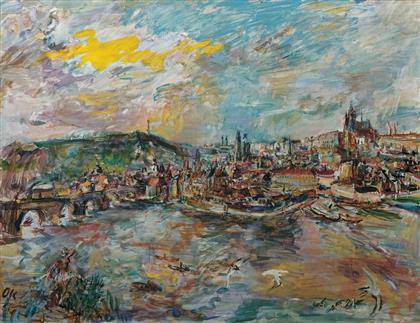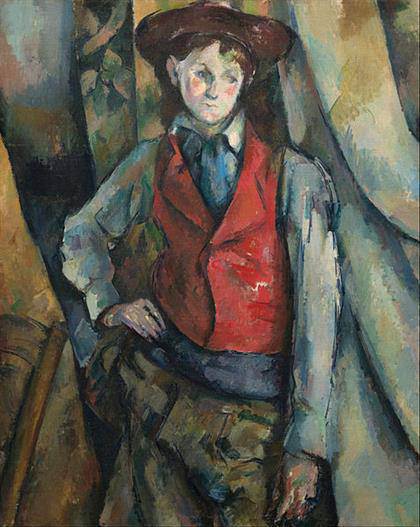
Exhibition view “Beyond Klimt. New Horizons in Central Europe”. Photo: Johannes Stoll © Belvedere, Vienna

Oskar Kokoschka, Der Prager Hafen, 1936. © Belvedere Vienna. Oil on canvas 91 x 117 cm.
‘Beyond Klimt’ at the Lower Belvedere ‘Beyond Klimt: New Horizons in Central Europe’. An exhibition at the Lower Belvedere seeks to shed light on continuity, change, and progress in the arts during the post-Klimt era. 23 March to 26 August 2018.]]>
Source: Belvedere Vienna
The deaths of Gustav Klimt, Egon Schiele, Koloman Moser, and Otto Wagner in 1918 were seen as the end of an era. To this day, Austrian art is probably most closely associated with these giants. However, in the years preceding 1918 their influence on the Austro-Hungarian art world had actually waned – art had already moved on. Although a time of political turmoil, the art scene remained remarkably unaffected and was characterized by a longing for change.
Although younger artists still looked to Gustav Klimt’s influence as a father figure, placing the focus on Klimt and the year 1918 tends to conceal the fact that artistic change was already underway and continued to evolve after the war. Art in the interwar period in Europe is characterized by a quest for international connections transcending the new political and ideological boundaries. There was a vibrant exchange of ideas between artists resulting in constructivist, expressionist, and fantastical trends. Cosmopolitan networks emerged among the artists of the former Austro-Hungarian Empire while art magazines made an increasingly important contribution to disseminating these new ideas.
The outbreak of the Second World War brought this internationalism to an abrupt end and the sense of a shared culture faded, once again, into the background. The exhibition seeks to reveal the parallels during this period and demonstrate continuity and change in the art of the Austro-Hungarian Empire. Featuring works by around eighty artists, including Josef Capek, Friedl Dicker-Brandeis, Albin EggerLienz, Gustav Klimt, Oskar Kokoschka, Koloman Moser, Antonin Prochaska, Egon Schiele, Lajos Tihanyi, and many others.
Related content
’Aging Pride’ at the Belvedere (exhibition, 2017-2018)
Follow us on:


